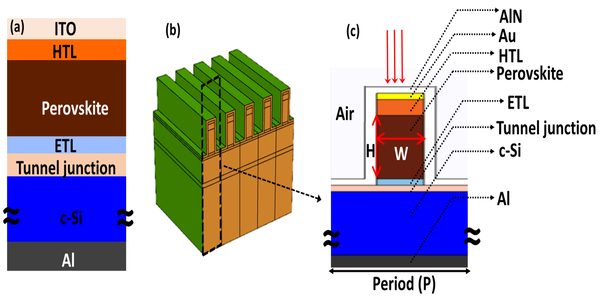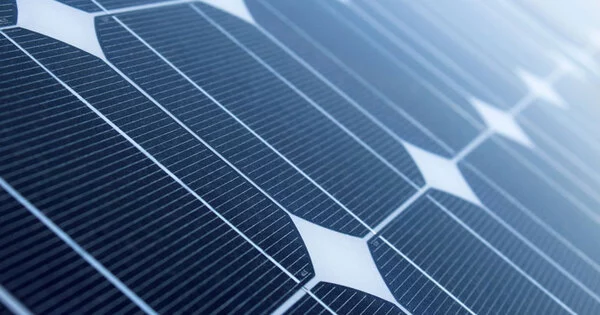All-perovskite tandem solar cells hold the promise of exceeding the efficiency limits of single-junction solar cells; however, until now, the best-performing all-perovskite tandem solar cells have exhibited lower certified efficiency than single-junction perovskite solar cells.
By the end of 2021, HZB researchers had demonstrated perovskite silicon tandem solar cells with an efficiency of close to 30%. This value held the world record for eight months, which is a long time in this hotly contested field of research. The researchers describe how they achieved this record value using nanooptical structuring and reflective coatings in the prestigious journal Nature Nanotechnology.
Tandem solar cells made of perovskite and silicon achieve significantly higher efficiencies than silicon solar cells alone. HZB tandem cells have already broken several world records. Most recently, in November 2021, HZB research teams achieved a certified efficiency of 29.8% with a tandem cell made of perovskite and silicon. This was an unbroken world record that stood at the top for eight months. It wasn’t until the summer of 2022 that a Swiss team at EPFL succeeded in exceeding this value.
Our competences complement each other very well. Most surprising, this texture brings several advantages at once: it reduces reflection losses and ensures a more regular perovskite film formation.
Prof. Dr. Christiane Becker
Three HZB teams collaborated closely to create the record-breaking tandem cell. The details are now available in Nature Nanotechnology. The journal also asked them to write a research briefing summarizing their work and providing an outlook on future developments.
Due to their high power conversion efficiency, perovskite solar cells (PSCs) are the most promising area of research among new-generation photovoltaic technologies (PCE). Perovskite solar cells (PSCs) based on a new class of semiconductors—organic and inorganic hybrid halide perovskites—have emerged as a disruptive photovoltaic (PV) technology that is potentially cost-effective, scalable, and highly efficient, with the potential for terawatt-scale deployment.

Textures improves the performance
Perovskite solar cells are a type of thin-film solar cell made from the perovskite class of man-made materials. Perovskites are a different material than the silicon wafers used in traditional solar panels; they have a unique crystallographic structure that allows them to convert photons of light from the sun into usable electricity. Perovskite solar cells have the potential to be a high-efficiency, low-cost solar technology that could eventually replace traditional silicon solar panels.
“Our competencies complement each other very well,” says Prof. Dr. Christiane Becker, who developed the world record cell with the team led by Dr. Bernd Stannowski (silicon bottom cell) and Prof. Dr. Steve Albrecht (perovskite top cell). Becker’s team introduced a nanooptical structure into the tandem cell: a gently corrugated nanotexture on the silicon surface. “Most surprising, this texture brings several advantages at once: it reduces reflection losses and ensures a more regular perovskite film formation,” says Becker. In addition, a dielectric buffer layer on the back of the silicon reduces parasitic absorption at near-infrared wavelengths.
As a result, the researchers believe that customized nanotextures can help to improve perowskite semiconductor materials on a variety of levels. These findings are useful not only for tandem solar cells made of perovskite and silicon but also for light-emitting diodes based on perovskite.





